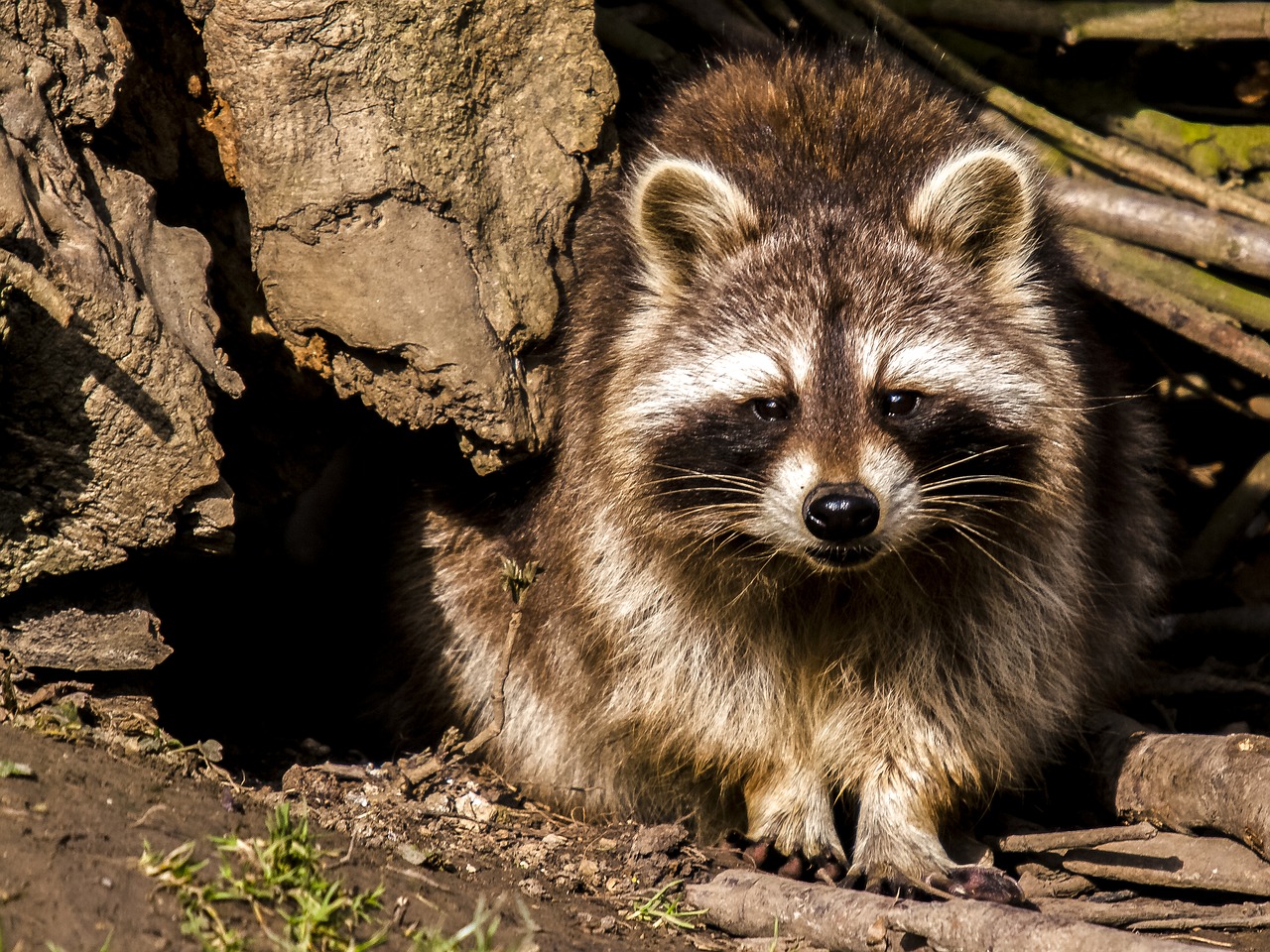
Call Now For Help With Raccoons
Raccoons
Description
Raccoons are nocturnal mammals that are found throughout North America. They are common in the wooden Eastern parts of the United States of America. The native Northern raccoon and six other raccoon species live mostly in the tropical islands. The raccoons are known to be very clever animals with nimble hands. They are intelligent in solving problems and they are able to turn doorknobs, open laches, swim, climb and run up to speeds of 10 miles per hour. Being a rabies vector species, raccoons can be dangerous to both humans and pets.
Appearance
Raccoons are middle-sized, stocky animals. Their bodies are covered in grey fur with distinctive black markings in the shape of a bandits mask around the eyes. They have rings on their fluffy tail. Raccoons also have short ears, black eyes and a small black nose at the end of the snout. The mammals appear hunched because their front limbs are shorter than their hind limbs.
Habitat
The raccoons’ preferable habitat is the woodland ecosystem. They prefer a habitat close to a source of water such as rivers, streams, and marshes. This is because their favorite prey is aquatic invertebrates such as crayfish, young turtles, snails, and clams. They are also herbivores that feed on a large variety of plant-based foods such as vegetables, corn, nuts, and fruits such as watermelon. Raccoons have also adapted to live in urban areas, suburbs, and farms. They have adapted well to the life in the city by learning the skill of scavenging food from garbage cans, feeding on crop fields, and gardens. Wild raccoons live in raccoons nests in rock crevices, tree cavities and in tree cavities. They can also live in dens abandoned by other animals such as the muskrat lodges. In suburban areas, the mammals are said to live in buildings that are not occupied
Entry
Raccoons live in close proximity to man and the mammals frequently make attempts to enter man’s homes and yards. Yards usually have accessible food such as vegetable gardens, compost heap, pet food containers, and trash bags that tend to attract raccoons. Female raccoons are known as sows. During spring, sows build nests in garages, chimneys, attics and in empty buildings to raise their young. When raccoons become comfortable living among humans, they usually attempt to enter into their homes through pet doors and open windows to raid food in the house.
Damage
Raccoons usually damaging property. When raccoons want to build shelter, they make effort to access chimneys or the attics leading to damages on wire coverings and may tear up roof tiles. In residential yards, raccoons break stalks of vegetables while stealing vegetables and fruits. In corn farms, the mammals usually cause widespread destruction when they raid and eat corns from the cob and other grains. Raccoons are good diggers with strong paws and can dig through watermelon plants and eat its fruit. Hungry raccoons are capable of opening fence latches of chicken coops and find their way inside. They then destroy chicken nets, kill the chicken and eat them as well as their eggs.
Control and Safety
If you want raccoons away from your homes and property, you need to remove food sources as food are the main attraction for the raccoons to come close to human dwellings. Secondly, you have to properly dispose of thrash in secure bins with tight-fitting lids. Thirdly, pet food should not be left outside all night. Another way of controlling raccoon invasion into homes and property is by cleaning up after barbecues and grills to eliminate enticing scents of meat that may attract raccoons. To stop raccoons from building nests around your home, you can seal up gaps along the attic walls exteriors and place a guard on the top of chimneys to prevent raccoons from access to homes. Lastly, secure the gardens with outward leaning fences that are tall to prevent raccoons from access.
Trapping and Removal
Despite the invasive and troublesome nature of raccoons, they are regarded as game animals and have legal protections from most of the states. It is illegal in to kill or capture raccoons from their original dwelling and release the captive mammals in locations away from the capture site. Only certified wildlife specialized and licensed trappers can do live trapping and relocating of problematic raccoons and other game animals.
